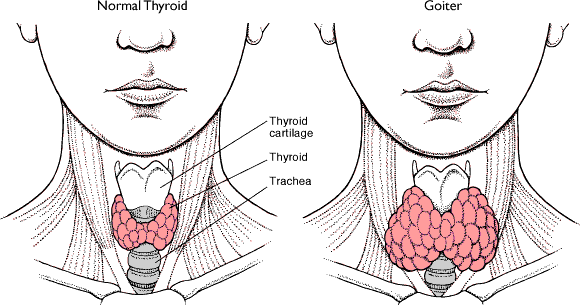How Environmental and Societal Changes Affect Our Lifestyle
There have been profound social, nutritional, and occupational changes accompanied by core changes in the family structure related to eating patterns, levels of physical activity and the widespread use of media in all forms among children, adolescents, and adults. Each of these in combination with genetic tendencies play an integral role in what has happened over the past decades.
Fast food and eating out
1960, most of the food consumed by Americans was prepared at home. During this time, only 21% of a family’s food budget was spent on eating out. By 2008, it had increased to 42%. The number of fast-food and full service restaurants has grown tremendously between 1972 and 1997. There were just a few hundred McDonald’s restaurants in 1963 compared to over 13,000 currently. An estimated 200,000 drive-thru’s are spread across the US with 6 billion visits annually.
Fast food is convenient, low in nutritional value, high in sodium, saturated fat, and calories. For example, a standard McDonald’s meal of a quarter pounder with cheese, medium fries, and medium regular Coke has over 1000 calories and costs around $11 whereas the food costs for a self-prepared lunch are just over $6. Moving up to a large regular Coke and large fries adds another 300 calories and minimal additional cost to the meal. Topping it off with a regular M&M McFlurry for dessert adds 640 calories more and $2.50 to the cost.
The average American eats out an average of five times weekly and the average household spends $300 monthly on meals outside of the home. During 2015-2018, 36% of children and adolescents aged 2-19 consumed fast food daily with over 11% of this age group deriving 45% of their daily calories from fast food. The fast-food industry markets heavily to Black and Hispanic ethnic minorities while fast-food restaurants are more commonly located in ethnic neighborhoods.
Sugar sweetened beverages (SSBs)
Consumption of SSBs play a major role in the excessive daily caloric intake of most Americans. Because of the low cost of raw materials for a SSB, restaurants and drive throughs can sell 32 ounces of a beverage for 99 cents and still make a profit. The rapid absorption and rise in blood sugars from consuming SSBs triggers a rapid release of insulin to keep glucose levels stable. Ingestion of SSBs leads to a higher risk of Type II diabetes independent of a person’s weight and other factors. The per capita consumption of high fructose corn syrup, the main ingredient in sugar sweetened beverages and dessert products, increased dramatically from the 1970’s to the late 1990s. Americans consume on average 37 gallons of SSBs annually, even displacing milk consumption in children.
Sugar-sweetened beverages can be purchased everywhere in the US: grocery stores, drive-thru’s, sit-down restaurants, gas stations, movie theatres, amusement parks, sports stadiums and are available at parties, weddings, and other gatherings. In the early 2000s, nearly 75% of high schools, 65% of middle schools, and 30% of elementary schools had exclusive contracts with soda companies.
School districts began signing these contracts in the early 1990s in exchange for funding and other incentives. The contracts gave companies exclusive and long-term rights to sell and advertise beverages on school campuses. When vending machines containing SSBs are placed in elementary and high schools, the school district may make a daily profit of $200. One school district holding a contract with a soft drink company made over $50,000 monthly. However, more schools are rejecting these deals. The Center for Commercial-Free Public Education has identified 30 districts that have refused contracts with soft drink companies thereby creating safe havens for students by not subjecting them to commercial messages. The only beverages that can be sold on school campuses are 100% fruit juice, water, low/nonfat milk, and beverages with less than 10 grams of sugar.
Family structure and migration to the suburbs
Family structure has had a dramatic effect on food consumption in the United States. In 1975, 47% of women with children under age 18 worked outside of the home. By 2009, 78% of women with children between 6-17 years of age worked outside of the home. The consequences of this shift in employed women, traditionally the homemakers of families, means less time for shopping for food, preparation of packed lunches and sit-down dinners at home.
Another important well-documented shift in the US has been the migration of Americans from urban communities to the suburbs. In 1950, 23.2% of households lived in the suburbs. A 2017 survey from HUD (Housing and Urban Development) and the Census Bureau indicate that the number of suburban households has more than doubled to 52% from 1950 to the present. People living in suburban households no longer walk to the corner store to purchase food, a gallon of milk, or diapers unlike shopping patterns in urban cities like New York, Philadelphia, and Chicago. In urban centers, residents heavily rely on public transportation or walking to a destination or a subway location.
Physical activity and leisure time
Historically, outside of pizza deliveries, food delivery services were not common in the past. If a family household needed groceries, a drive to the store, parking, and walking up and down the aisles was a weekly routine. Now, home delivery services for takeout food are a $250 billion dollar industry in the US. Besides bringing high calorie and less nutritious food to your doorstep, the industry furthers the decline in aggregate physical activity. The recent COVID pandemic caused dramatic changes in the workplace and food consumption. Now, over 20% of US shoppers use grocery delivery services with an average of 36 trips annually. Likewise, Amazon’s delivery service has revolutionized shopping in America with an unintended effect of also dramatically reducing physical activity.
Physical activity was once a daily occurrence for young school children and mandatory in most high schools throughout the country, which is no longer the case. In 2021, 51% of children participated in organized sports. However, 70% of the 20 million kids who register for organized sports quit playing these sports before they turn 13 years old and never play them again because of boredom or the costs. Children in low-income households are 6 times more likely to quit organized sports in early adolescence secondary to the costs. The migration of households to the suburbs has also had a major impact on children walking or biking to school. Physical activity among adults has been declining for years in association with marked reductions in occupations and household chores requiring physical labor. Most American adults do not meet minimal goals of activity.
The average adult male and female now spend about 5 hours daily on leisure time. The majority of adult leisure time is spent watching television while children and adolescents spend twice as many hours on video games, the internet, and other media. The effect of screen media exposure and time spent is highly predictive of obesity trends in children. Efforts to reduce leisure time activity have been shown to be successful in reducing children’s BMI.
Food Industry Subsidies
Food and farm subsidies, especially for corn, wheat, rice, and soybeans have been paid to farmers in the US for decades; whereas subsidies for fruits and vegetables are a fraction of what is spent by the U.S. Government. Corn subsidies alone totaled $116 billion since 1995.
Annual corn production has increased from 4 billion bushels in 1980 to over 12 billion bushes in 2022 with most of it converted to high fructose corn syrup and other commercial food products, feed for cattle, which helps grow heavier cows with more fat marbled beef. Government food subsidies go to relatively wealthy commercial landowners and money is not available for other food and nutrition programs. Over a third of farmers (600,000) receive government subsidies up to $125,000 but often more depending on how claims are filed. One of the direct negative impacts of government subsidized corn production is the availability of inexpensive high fructose corn syrup. This allows the fast-food industry to sell 32 ounces of a high fructose corn syrup soft drink for 99 cents.
Thyroid problems
Low thyroid function or hypothyroidism contributes to weight gain and difficulty in losing it. It is especially common in women. Information from the Harvard Health website indicates that between ages 35 and 65, about 13% of women with have an underactive thyroid and the percentage increases to 20% for women over the age of 65. Studies estimate that between 3% and 16% of men in the US have hypothyroidism, with the risk increasing with age. Although men do have hypothyroidism, the condition is much more likely in women.
The most common cause of hypothyroidism is Hashimoto’s disease, an autoimmune disorder in which the immune system attacks the thyroid gland, causing inflammation and destruction of normal thyroid tissue and thereby making it difficult for the thyroid gland to produce enough hormones to meet the bodily requirements. For women, the demands for increased thyroid production occurs early in pregnancy. Normal fetal development depends on having enough thyroid hormone around. Thus, someone whose thyroid function tests were normal before pregnancy may become hypothyroid in the first trimester as the fetus develops. In addition, low thyroid function may cause problems with becoming pregnant in the first place or contribute to a higher risk of miscarriage. Diagnosing Hashimoto’s disease required blood tests looking for the presence of anti-thyroid proteins or antibodies responsible for the inflammation in the gland.
Summary
So, as you start on the path to becoming healthier, you’re now better informed about the reasons losing weight may be difficult and how insulin resistance and low thyroid function play a role. Ask relatives if they have had problems with their thyroid, as it often runs in the family. In moving from contemplating lifestyle change to action, check in with your primary care provider or your gynecologist. Talk to them about checking HgbA1c for insulin resistance and thyroid antibodies for underlying Hashimoto’s disease.
Next steps on the journey would be discussing lifestyle patterns with your immediate family and learning more about nutrition in the next two blogs.




